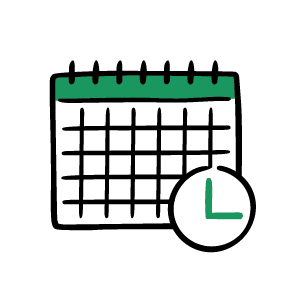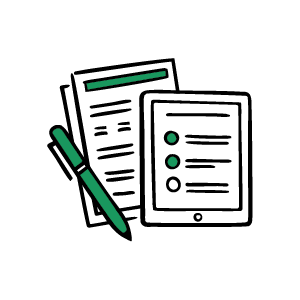Twelfth Grade Curriculum
- 7 courses included
- 14-day money back guarantee
- Update grade level anytime
Subscribe more students, save more!
10% off
2 students
20% off
3-5 students
25% off
6+ students
Your twelfth grader is mastering advanced critical thinking while preparing to transition their academic knowledge into practical, real-world applications. While all twelfth graders take English 12, they can choose from several course options for math, science, and social studies. Learners also love that they have their choice of 15 elective courses to customize their schedule.
Most popular core courses for twelfth graders include:
- English 12 - Advance literary analysis and evaluation of a diverse range of classic and contemporary texts while finessing comprehension, oral and writing skills.
- Pre-Calculus - Extend understanding of various aspects of functions: graphing, composition, inverse, modeling and systems.
- U.S. Government - Review the Constitution and its amendments, while investigating the development of civil rights and liberties
Twelfth graders choose from the following elective options:
- Art History I
- Computer Applications - Office 2019
- Concepts in Probability and Statistics
- Contemporary Health
- Economics
- Environmental Science
- Foundations of Personal Wellness
- Healthy Living
- Intro to Art
- Intro to Communications and Speech
- Lifetime Fitness
- Personal Finance
- Psychology
- Sociology
- Strategies for Academic Success
Math Alternatives:
- Algebra I
- Geometry
- Algebra II
- Pre-Calculus
- Trigonometry - only one semester
Science Alternatives:
- Biology
- Chemistry
- Physics
Social Studies Alternatives:
- US History I
- Survey of World History
- US History II
- US Government
This outline shows an abridged example of both what your child will learn (the scope) and the order in which the lessons build on each other (the sequence). More detailed lesson plans are available in the parent account. All lesson plans are entirely customizable.
Twelfth Grade English
Chapter 1: American Roots – From Native Traditions to the American Revolution
- Explore creation myths, early American sermons, and foundational political texts to understand how American identity formed.
- Analyze rhetorical devices and figurative language in texts like Sinners in the Hands of an Angry God and the Declaration of Independence.
Chapter 2: Romanticism, Transcendentalism, and Gothic Literature
- Study Emerson, Thoreau, and Dickinson to understand themes of individualism, nature, and poetic structure.
- Examine gothic and allegorical literature including Poe and The Scarlet Letter to analyze setting, mood, and character perspective.
Chapter 3: A Nation Dividing and Expanding – Civil War, Regionalism, and Realism
- Evaluate rhetoric in abolition and women's rights speeches from figures like Frederick Douglass and Sojourner Truth.
- Study realism in Twain and Native American oratory to analyze humor, dialect, and historical impact.
Chapter 4: Early Modernism
- Explore early 20th-century poetry by T.S. Eliot and Robert Frost, analyzing form, speaker, and themes.
- Read and compare WWI-era texts, including Wilson’s war messages and modern feminist plays like Trifles.
Chapter 5: Modernism and Postwar Outlooks
- Analyze setting, dialect, and cultural voice in The Great Gatsby, Zora Neale Hurston, and Depression-era interviews.
- Interpret nonfiction and legal texts like Executive Order 9066 and Brown v. Board to connect literature with history.
Chapter 6: Literature of Rebellion
- Investigate race and social justice in works by Richard Wright, Langston Hughes, and James Baldwin.
- Study satire, poetic structure, and grammar through Ginsberg, Vonnegut, and writing workshops.
Chapter 7: Contemporary Voices
- Examine civil rights essays, Holocaust reflections, and Vietnam War texts to understand tone and theme.
- Practice academic writing skills including grammar revision, source analysis, and research technique.
Chapter 8: Postmodernism to the Twenty-First Century
- Explore identity and globalization in contemporary literature by Lahiri, Cofer, and Anaya.
- Analyze informational texts like Fast Food Nation and Freakonomics, then craft multimedia-supported arguments.
Precalculus
Each chapter explores core concepts and applications in algebraic and trigonometric modeling, advanced geometry, and introductory calculus foundations. Lesson plans build on each other to prepare students for college-level math.
Chapter 1: Functions and Modeling
Chapter 2: Trigonometry
Chapter 3: Analytic Trigonometry
Chapter 4: Complex Numbers and Polar Coordinates
Chapter 5: Vectors
Chapter 6: Matrices
Chapter 7: Systems and Matrices
Chapter 8: Analytic Geometry
Chapter 9: Sequences and Series
Chapter 10: Limits
U.S. Government
Chapter 1: Introduction to American Government
- Understand the purpose and functions of government in society.
- Explore different forms of government and political theory.
Chapter 2: The Constitution
- Examine the principles behind the U.S. Constitution and analyze the Preamble.
- Understand federalism, checks and balances, and the amendment process.
Chapter 3: Civil Rights and Liberties
- Analyze the Bill of Rights and its interpretation by the courts.
- Explore major civil rights movements and landmark Supreme Court cases.
Chapter 4: Government Institutions
- Understand the structure and functions of Congress, especially the House of Representatives.
- Explore the roles of the President, the courts, and federal agencies.
Chapter 5: Civics and Participation
- Examine political parties, ideologies, and the election process.
- Understand the responsibilities and impact of civic engagement.
Chapter 6: Public Policy
- Learn how public policy is created, implemented, and evaluated.
- Explore case studies on healthcare, education, and environmental regulation.























